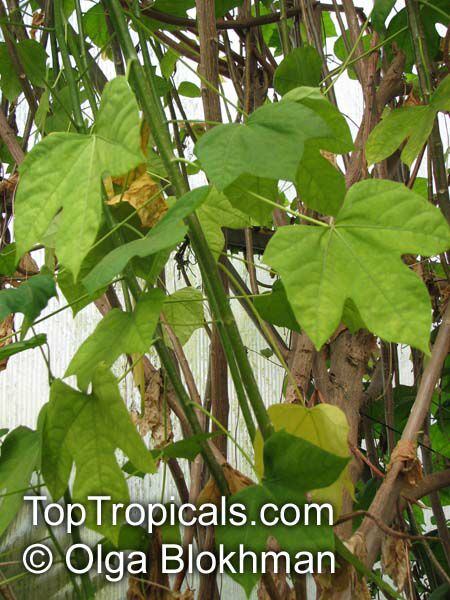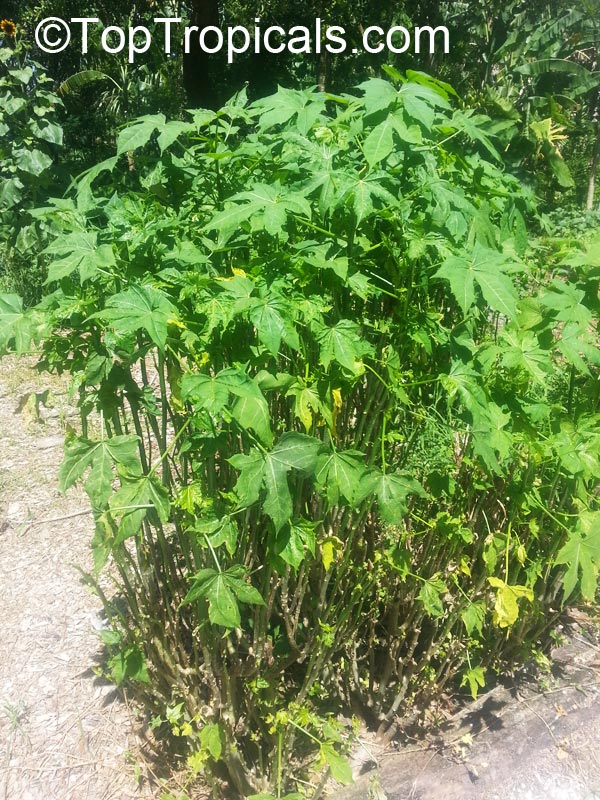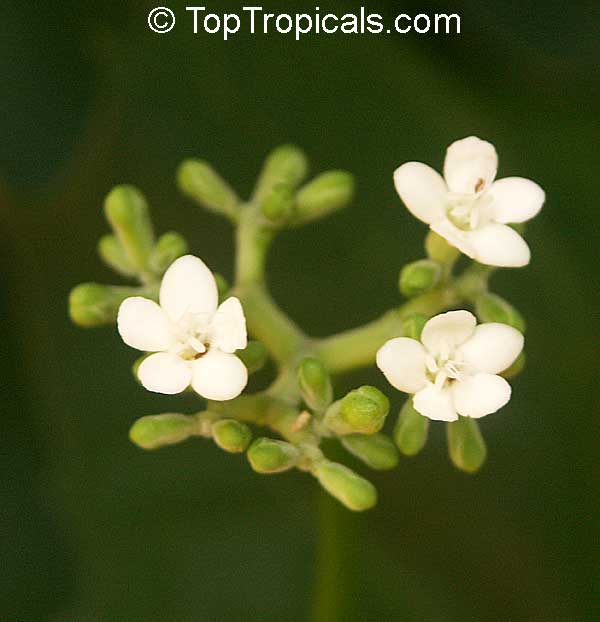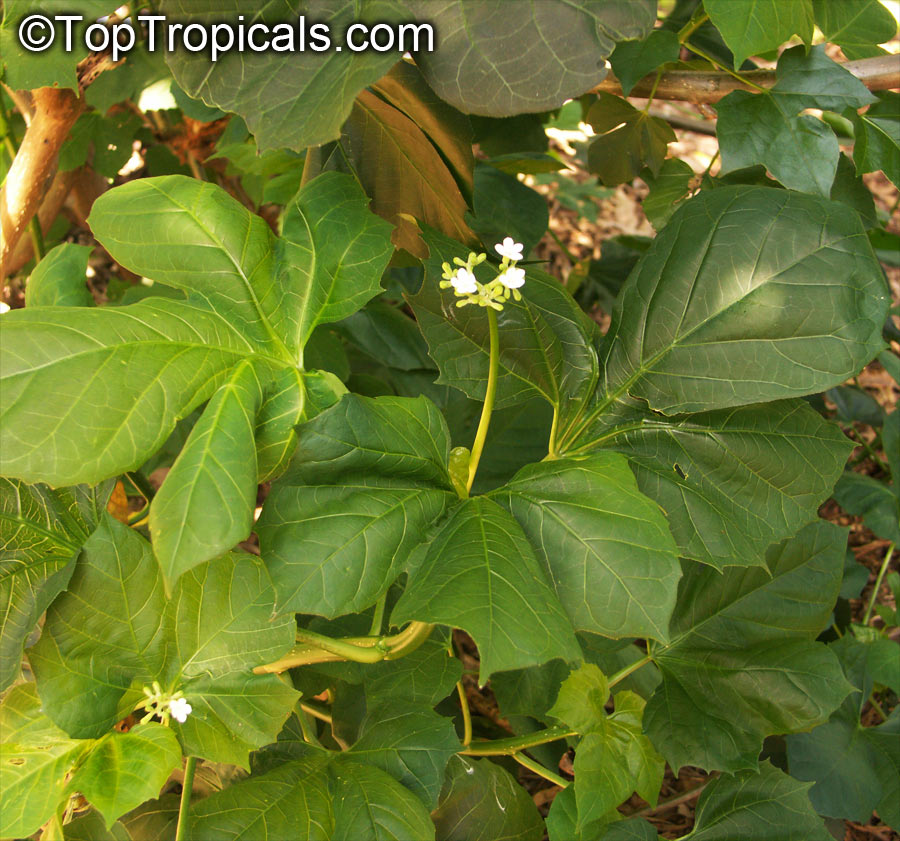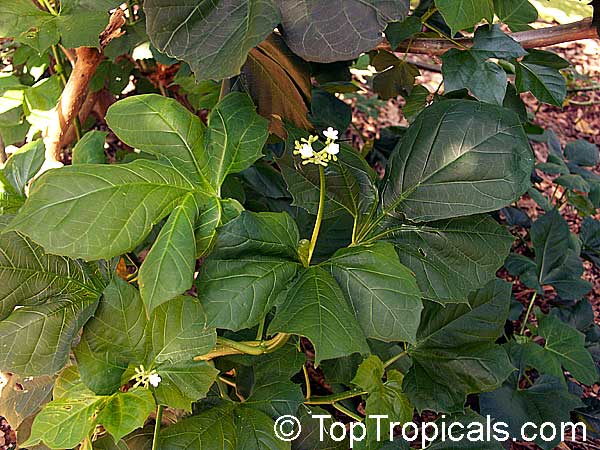Cnidoscolus chayamansa
Maya Spinach Tree, Chaya Col, Kikilchay, ChaykekenFamily: Euphorbiaceae
Origin: Yucatan peninsula, Belize, Central America, Southern America










The plant is originally found on the Yucatan peninsula, but can now be found in the Southern, Central and Northern America, where the leaves are eaten. Chaya is a little known leafy green vegetable of dry regions of the tropics. The name comes from the Mayan chay. The genus Cnidoscolus consists of 40 or more species, but only chayamansa refers to the vegetable chaya. Chaya was introduced into Cuba, and from there into Florida. In South Florida it is often found as a rank shrub, but seldom is appreciated for its food value as a vegetable. Chaya is a large, leafy shrub reaching a height of about 6-8 feet. Each leaf is 6-8 inches across and is borne on a long slender petiole (leaf stem). Where the leaf stem connects to the leaf, the leaf veins are fleshy and cuplike. Chaya blooms frequently and both male and female flowers are borne together at the end of long flower stems. The wood of young stems is soft, easily broken, and susceptible to rot. When cut, the stem exudes a white latex. The use of gloves during harvesting is suggested to protect the hands from spines. Younger leaves and a bit of the stems are cut and used much like spinach. Large leaves are cut into manageable pieces before cooking. Leaves are immersed and simmered for 20 minutes and then served with oil or butter. Chaya is a good source of protein, vitamins, calcium, and iron. However, raw chaya leaves are highly poisonous. They contain a high content of hydrocyanic acid. In this respect chaya is similar to cassava. With chaya, 1 minute of boiling destroys most of the acid. The plant prefers a well drained soil with some to much water and lots of sun. The tiny flowers are white, and the plant can be reproduced both by seeds and cuttings.
Similar plants:
